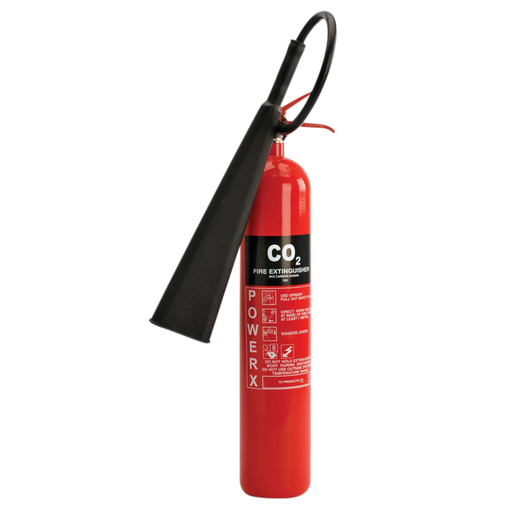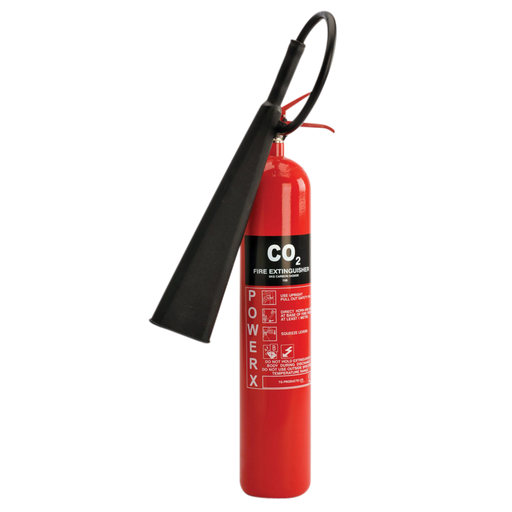CO2 Fire Extinguishers
There are 5 main fire extinguisher types generally in use – Water, Foam, Dry Powder, CO2 and Wet Chemical. It is important that you choose the correct type for your premises, or you may not meet current regulations.
The various types of extinguisher are then classified as to their ability and appropriateness for putting out fires that are started with different types of fuel. The risk to your premises by these 'classes’ assist in determining the most appropriate fire extinguisher types you need. Very often more than one type of extinguisher will be required.
In addition to choosing the right type of extinguisher you will also need to make sure that you have the right size and weight of fire extinguisher as well as the right kind.
Whilst there are 5 main types of fire extinguisher, there are varinats of both the Water and Dry Powder extinguishers, meaning there are in fact 8 fire extinguisher types to choose from. The 8 types of fire extinguisher are
- Water
- Water Mist
- Water Spray
- Foam
- Dry Powder – Standard
- Dry Powder – Specialist (for use with specific flammable metals such as lithium)
- Carbon Dioxide (‘CO2’)
- Wet Chemical
Classes of Fire
There are six classes of fire: Class A, Class B, Class C, Class D, ‘Electrical’, and Class F.

- Class A fires – combustible materials: caused by flammable solids, such as wood, paper, and fabric
- Class B fires – flammable liquids: such as petrol, turpentine or paint
- Class C fires – flammable gases: like hydrogen, butane or methane
- Class D fires – combustible metals: chemicals such as magnesium, aluminum or potassium
- Electrical fires – electrical equipment: once the electrical item is removed, the fire changes class
- Class F fires – deep fat, cooking oils: typically a chip-pan fire in a domestic situation.
Fire Rating
All extinguishers capable of extinguishing class A, B or F fires carry a fire rating which is indicated by a number and letter (eg 13A, 55B). The number is indicating the size of fire it can extinguish under test conditions. The larger the number, the larger the fire it can extinguish. The letter indicates the fire classification as above. Class C, D and the electrical symbol do not carry a numerical rating.
Maintenance
Extinguishers in commercial or public buildings should be visually inspected monthly for damage or pressure loss and should be serviced to BS 5306-3 once a year. Water, foam and powder extinguishers have to be discharged and refilled every five years. CO2 extinguishers must be refurbished after ten years. One exception, however, are the kitemarked P50 servicing-free extinguishers which only need refurbishment after ten years and do not require maintenance within the ten years (other than the monthly visual inspection and a recorded yearly visual inspection by the owners).
-

 Save 0%
Save %
Original price£65.40- Original price£65.40Original price£65.40£95.37£95.37-£95.37Current price£95.37| /
Save 0%
Save %
Original price£65.40- Original price£65.40Original price£65.40£95.37£95.37-£95.37Current price£95.37| /L29824 - THOMAS GLOVER PowerX Fire Extinguisher - CO2 2Kg
Thomas GloverPowerX fire extinguishers from Thomas Glover come with a 5 year warranty as standard, as well as being fully refillable and supplied complete with ...
View full detailsOriginal price£65.40- Original price£65.40Original price£65.40£95.37£95.37-£95.37Current price£95.37| /Save 0% Save %


